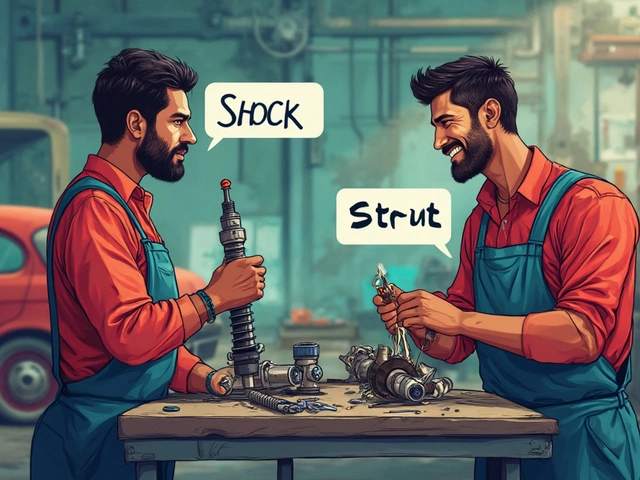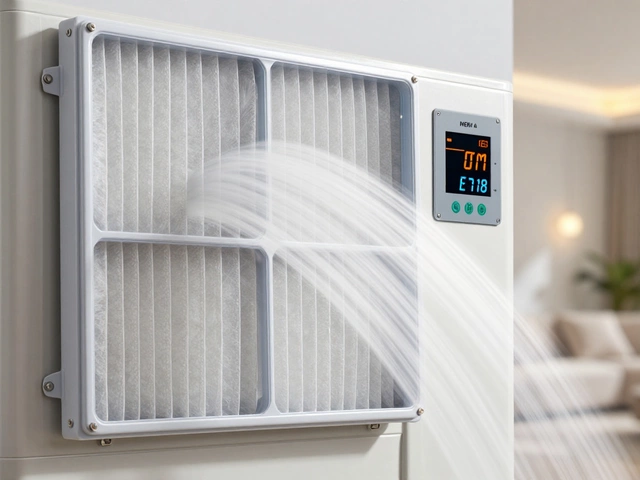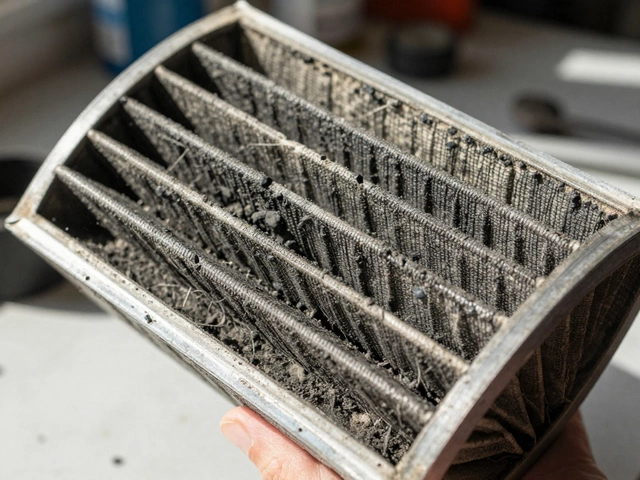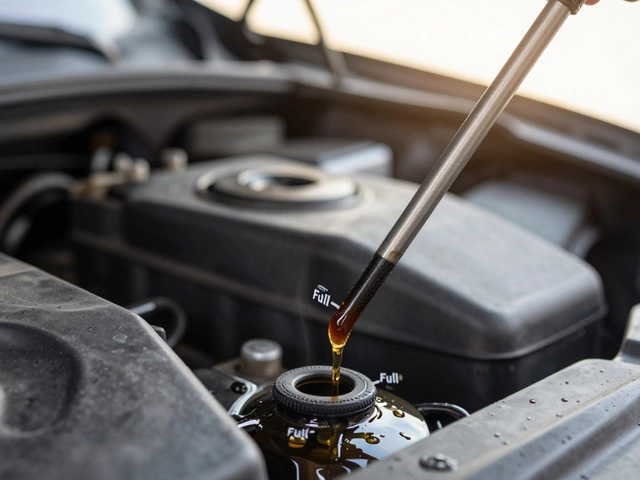
Car enthusiasts and everyday drivers alike know that a car's suspension system is its backbone when it comes to a smooth ride and precise handling. But what happens when the front suspension starts to wear out? Before you call it quits on those road trips, let’s explore what crucial parts you should replace to keep your vehicle running like a dream.
First off, let's talk shocks and struts. They're not just there for a smooth drive; they’re crucial for vehicle stability and safety. These components take the brunt of the road impact and are a good starting point for anyone looking to overhaul their front suspension. If you notice any unusual noises or have less control while driving, it might be time for an upgrade.
Did you know that the ball joints are like the unsung heroes of your suspension system? These little guys connect the control arms to the steering knuckles, allowing for movement while maintaining connection. Imagine them like your car's ankles, providing the flexibility needed for maneuvering.
- Understanding the Suspension System
- Shocks and Struts: The Core Components
- Ball Joints: Keeping It All Together
- Control Arms: Stability on the Road
- Tie Rods: Steering Simplified
- Tips for a Smooth Replacement Process
Understanding the Suspension System
The suspension system in a vehicle isn't just about comfort—it's crucial for maintaining control and safety. So, let's break down this system into its core components and functions.
The front suspension system in most cars includes several key parts: shock absorbers, springs, the steering linkage, and the control arms. Together, they work to absorb shocks from the road and keep the tires in contact with the surface, which is essential for proper handling.
Shock Absorbers and Struts
Did you know that about every 50,000 miles, you should check your shocks? These components help control the impact and rebound movement of the car's springs and suspension. When these wear out, your car might bounce more than usual, affecting your ride's overall smoothness.
Springs
The springs support the vehicle's weight and react to the irregularities of the road surface. This part of the suspension system is what makes your drive less bumpy, buffering the vehicle as you hit those pesky potholes.
Control Arms and Ball Joints
The control arms connect the suspension to the vehicle frame. They allow the wheels to move up and down while keeping everything aligned. Ball joints let the control arms pivot smoothly and can make steering much easier.
- Control Arms: Vital for maintaining wheel alignment and handling.
- Ball Joints: Key for allowing movement and supporting the car's weight.
Making sense of these parts and how they interact can help you diagnose suspension problems more accurately, saving time and money on unnecessary repairs.
Shocks and Struts: The Core Components
The front suspension might not sound glamorous, but without it, even your quick drive down to the grocery store would feel more like an earthquake. At the heart of it, we have the shocks and struts.
So, what's the deal with shocks and struts? Well, let’s break it down. Shocks primarily control the impact and rebound movement of your car’s springs and suspension, ensuring that your tires stay in contact with the road. Imagine them as your car’s way of lessening the effect of every bump and groove on the road. On the other hand, struts are a structural part of your vehicle’s suspension system, basically combining the functions of a shock absorber and a coil spring.
When to Replace?
Shocks and struts wear down over time. Common signs include a bouncy ride, nose-diving when braking, and uneven tire wear. Typically, these should be replaced every 50,000 to 100,000 miles, but this can vary based on your driving habits and road conditions. Lately, some newer cars have advanced sensors that warn you when it’s time for a replacement.
Replacement Tips
If you're going the DIY route, make sure you have the right tools: a jack, wrench, and some elbow grease for starters. Always replace shocks and struts in pairs to ensure balanced handling. Here’s a pro tip – while you’re at it, check your tires and alignment to avoid handling issues. If you’re unsure about tackling this alone, your friendly neighborhood mechanic is just a call away.
Monthly or regular inspections can save you from sudden breakdowns. This not only prolongs the life of your vehicle but also bumps up your safety on the road, especially with the unpredictable driving conditions we often face.
Ball Joints: Keeping It All Together
Ball joints might not be the first thing you think about when it comes to front suspension, but they're critical for your car’s performance and safety. These small yet mighty components allow the suspension to move up and down and pivot for steering. Think of them like the knees of your suspension system; without them, things would be pretty stiff!
One key thing to understand about ball joints is that they wear out over time, largely because they handle a lot of pressure and movement every time you drive. If they fail, it can mean serious steering and handling issues. Not to mention, it can cause uneven tire wear, which nobody wants.
Signs Your Ball Joints Need Attention
- Clunking noises when going over bumps – this is a major red flag.
- Vague or loose steering – if your steering wheel feels like it's not responding well, it's time to check those ball joints.
- Uneven tire wear – because the tires are relying on them to maintain alignment.
Maintenance Tips
Keeping an eye on your ball joints doesn’t have to be a hassle. Start by doing regular checks every time you rotate your tires or have an oil change. If you’re a DIY type, a handy trick is to lift the vehicle and check for play in the wheel. If there’s too much movement, it’s time to think about replacement. Here are some signs you should look for:
- Lift your car safely and secure it on jack stands.
- Grip the top and bottom of the tire and attempt to rock it. Too much play could indicate a bad ball joint.
- Inspect the joints visually. Cracked or torn rubber boots can let dirt in and grease out.
Replacing them isn’t overly complex but might require a special tool called a ball joint separator. Some folks prefer taking it to a professional to ensure it’s done right—which is a solid choice for most.
Ultimately, maintaining your car’s suspension is all about keeping a close eye on components like ball joints, especially if you want to keep your rides smooth and your tires lasting longer.

Control Arms: Stability on the Road
Control arms might not be the first thing you think of when considering vehicle stability, but they’re the unsung heroes in your front suspension setup. Acting as the primary link between your car’s suspension and its frame, control arms handle a lot of stress from the vehicle's weight and road conditions.
So, what exactly do these components do? At their core, control arms facilitate the smooth up-and-down movement of the wheels while keeping them in line with the car's body. In short, they keep your tires grounded and your ride stable, even when you hit those unexpected potholes.
Types of Control Arms
Before diving into replacements, it’s handy to know that there are two main types: upper and lower control arms. Some vehicles, especially older ones, use one or both depending on the suspension design. This is important when you're heading to the store or garage to get the right parts.
Signs of Wear and Tear
- Squeaking or knocking noises when you drive over bumps.
- Uneven tire wear, indicating misalignment.
- Struggling with steering, where the vehicle may pull to one side.
If you notice any of these symptoms, it might be time to swap out your control arms to maintain optimum suspension performance.
To highlight some numbers, studies indicate that the average lifespan of a control arm is about 90,000 miles. But keep in mind, this can vary based on driving conditions and vehicle type.
| Vehicle Type | Control Arm Lifespan (miles) |
|---|---|
| Sedan | 90,000 to 100,000 |
| SUV | 80,000 to 90,000 |
| Truck | 70,000 to 80,000 |
Tips for Replacement
- Always replace control arms in pairs (left and right) to ensure balance.
- Check bushings and ball joints while replacing control arms for signs of damage.
- Consider professional alignment after replacement to prevent uneven tire wear and handling issues.
By keeping an eye on these critical components and replacing them when necessary, you'll keep your car's suspension parts in tip-top shape, ensuring a safer and smoother ride.
Tie Rods: Steering Simplified
Imagine trying to turn your car without a proper tie rod in place—sounds like a nightmare, right? Tie rods are the real MVPs when it comes to steering your vehicle. They connect the steering rack to the wheel, allowing you to turn the car effortlessly while keeping everything aligned. So, when these start to wear out, things can get shaky—literally.
Here's a clear sign your tie rods might need attention: your car feels like it's wandering on the road, or maybe you've noticed uneven tire wear. These are classic signs that your tie rods need some TLC or even replacement. Trust me, ignoring this can lead to bigger issues down the line, not to mention safety risks.
Spotting a Worn Tie Rod
You might be wondering, "How do I know my tie rods are shot?" Simple checks can help. Start by jacking up the car and giving the tires a good shake. If there's excessive play when you try to move the tire back and forth, it's a red flag. Also, listen for any knocking sounds while driving—another hint your tie rods need a checkup.
Replacing Your Tie Rods
Alright, so you've identified the problem. Now what? Replacing tie rods isn't rocket science, but it does require some precision. Here’s a quick rundown:
- Jack up the car and remove the wheel for better access.
- Loosen the jam nut and remove the old tie rod end using a wrench.
- Compare the old and new tie rods to ensure you have the right replacement part.
- Install the new tie rod end in the reverse order of removal, making sure it's properly aligned.
- Tighten the jam nut and reattach the wheel.
Remember, after replacing the tie rod, it's vital to get a wheel alignment. It’s the key to ensuring your front suspension operates smoothly and prevents premature tire wear.
Why Regular Checks Matter
Here’s the deal—keeping tabs on your suspension parts like the tie rods can save you money and headaches on the road. Regular inspections can catch issues before they turn serious and help maintain your vehicle’s performance.
If you're into stats, here's a quick snapshot:
| Components | Lifespan (Miles) |
|---|---|
| Tie Rods | 70,000 - 100,000 |
| Control Arms | 90,000 - 100,000 |
| Ball Joints | 70,000 - 150,000 |
Stay vigilant, and your car will thank you with every smooth turn you take!
Tips for a Smooth Replacement Process
Thinking about swapping out those front suspension parts? Well, let's make sure it’s as painless as possible. Getting your hands a bit dirty can actually save you a bunch in the long run, and here's how to do it right.
Check Your Toolkit
Before we dive into the actual dismantling, make sure you've got your gear ready. A basic toolkit might not cut it, so consider grabbing specialty tools like a coil spring compressor or a good set of wrenches and pliers. Trust me, having the right tools will make things much smoother.
Hit the Haynes
Consider picking up a repair manual specific to your car model. These manuals are lifesavers and provide step-by-step instructions along with accurate diagrams. They can take a lot of guesswork out of the process.
Inspect and Replace
While you’ve got that sucker open, it's a great idea to inspect all suspension parts. Look at the condition of the tie rods, control arms, shocks, and ball joints. If one part's worn out, chances are others aren’t far behind.
Follow a Step-by-Step Guide
Breaking it down into steps makes it less overwhelming and helps ensure you don't miss anything. Here's a basic framework:
- Secure the vehicle on jack stands. Safety first!
- Remove the wheels to get to those suspension parts.
- Take off the old shocks and struts carefully.
- Inspect and replace ball joints and tie rods as needed.
- Install new suspension parts and double-check those bolts.
- Finish up by reattaching the wheels and taking it for a test drive.
Following this routine not only ensures a smoother process but usually gets you done quicker.
And a Little Stat for the Road
According to recent findings, vehicles with regularly maintained suspension systems typically have up to 30% better stability and control. That's peace of mind and better handling, all rolled into one!
Remember, taking your time and being prepared can save you a headache when tackling front suspension replacements. So, have fun and happy wrenching!





